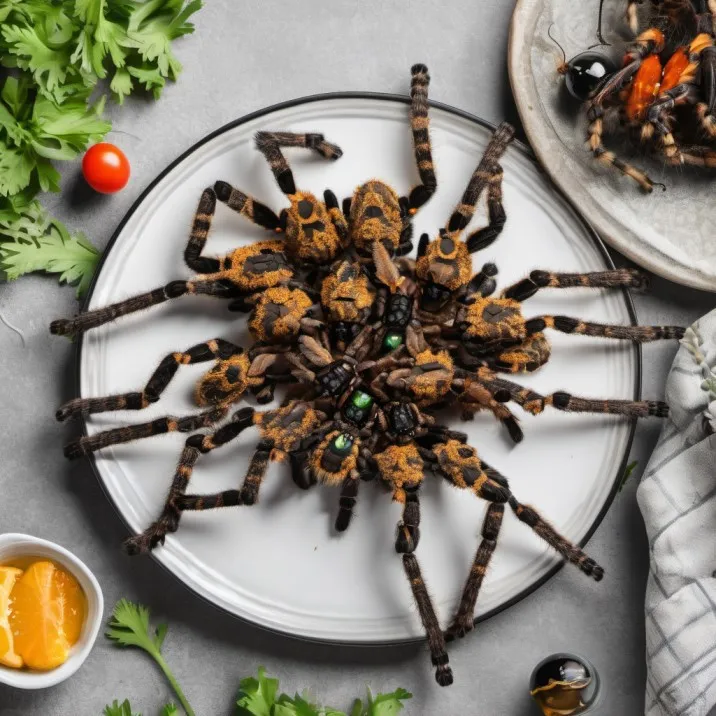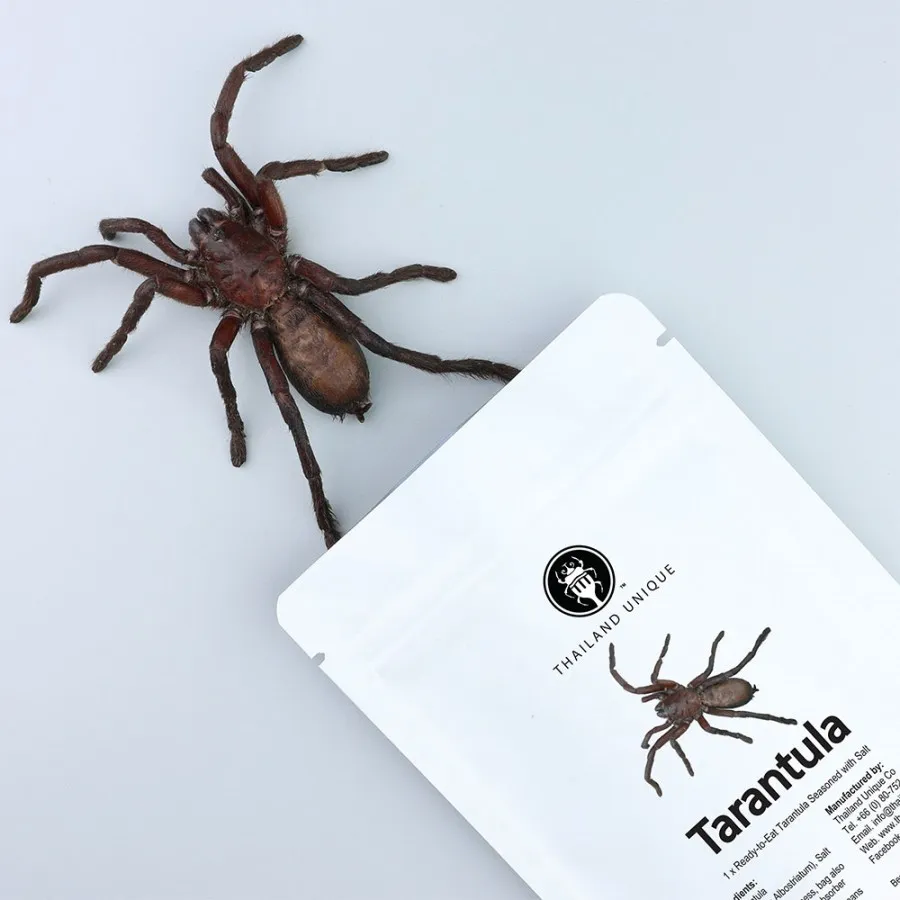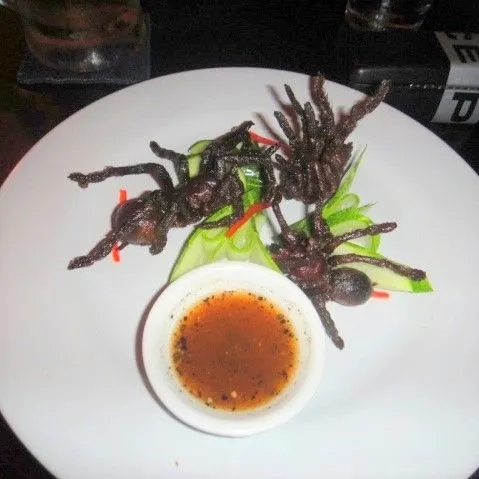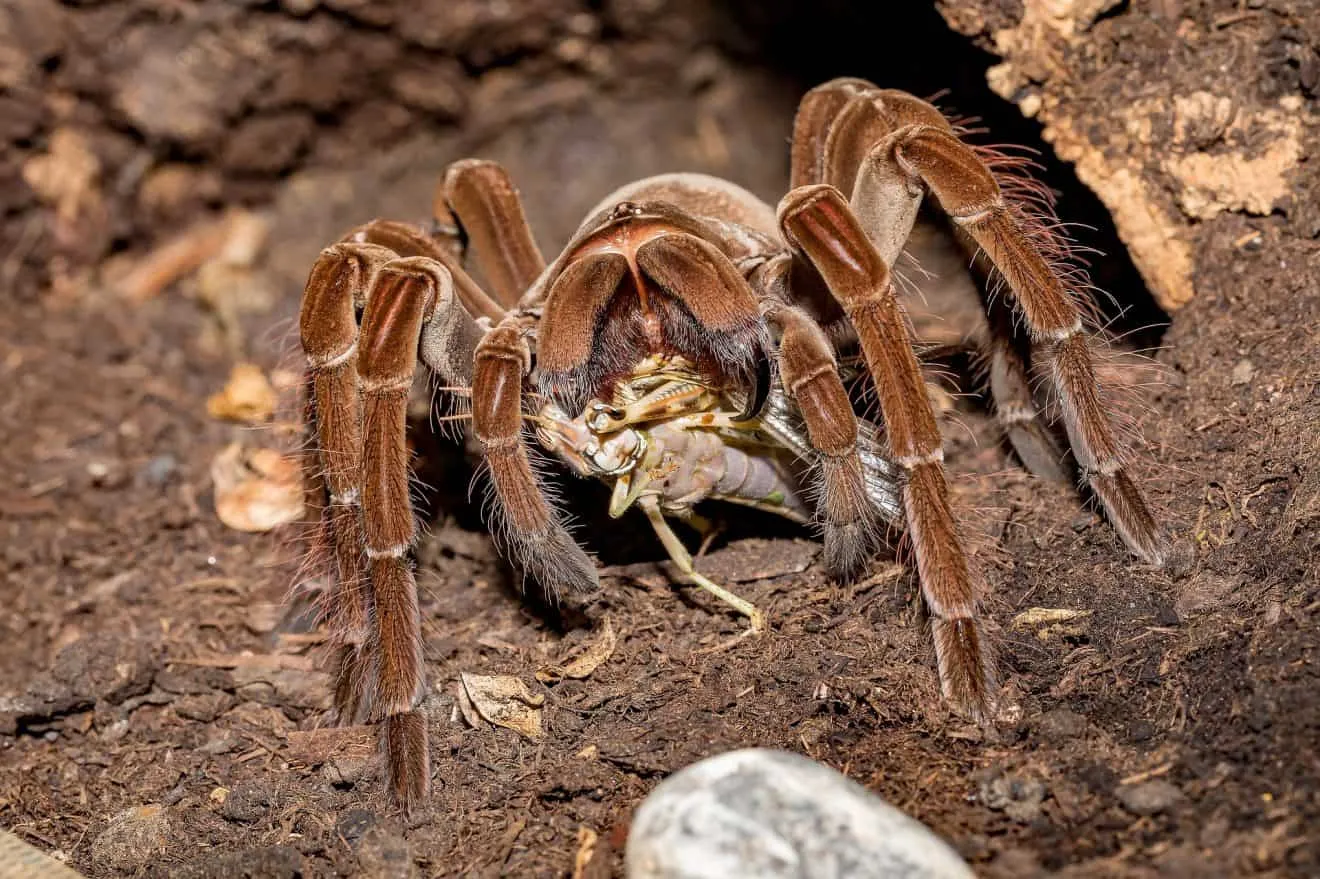What Do Tarantulas Taste Like?
The idea of eating a tarantula might seem daunting, but in certain cultures, these large spiders are considered a delicacy. The taste of a tarantula is surprisingly complex and varies depending on the cooking method and the spider’s diet. While the initial thought might conjure up images of a creepy-crawly experience, those who have tried tarantulas often describe the flavor profile as unique and not entirely unpleasant. Learning about tarantula taste opens a door to understanding different culinary traditions and the adventurous spirit of food exploration. It is essential to approach this topic with an open mind and a willingness to learn about the diverse tastes the world has to offer. As you delve into the details, you will discover that the preparation and consumption of tarantulas are more than just a gastronomic adventure; they represent cultural practices and survival techniques that have evolved over centuries.
Tarantula Taste Profile
Describing the exact taste of a tarantula is challenging, as it’s a sensory experience that combines different elements. The flavor profile is often a blend of various textures and tastes. Those who have eaten tarantulas often describe the flavor as a cross between shrimp or crab and chicken, with a slightly earthy undertone. The abdomen, which is often discarded, might have a less appealing taste, sometimes described as bitter or containing unpleasant, grainy textures. The legs and body typically offer a better flavor, with a slightly nutty or woody taste, particularly when roasted or grilled. The overall experience is far more complex than simply being ‘spider-like’; it is a nuanced taste that is appreciated in several cultures. It also depends on the spider’s diet, environment, and the preparation method. This can lead to variations in the final taste experience. Understanding the taste profile is the first step to appreciating this unusual food.
Texture and Flavor Descriptors

The texture of tarantulas plays a significant role in the overall taste experience. The legs and body can be crispy and crunchy when fried or roasted, similar to the texture of fried soft-shell crab or even crispy bacon. The meat itself is often described as tender, with a slightly chewy consistency, not unlike some types of seafood. Flavor-wise, tarantulas have been likened to shrimp or crab. Some people have detected a hint of chicken, especially in the body of the spider. There are notes of woodiness or nuttiness, especially if they’re grilled or roasted. Furthermore, the earthy undertones result from the spider’s diet and habitat, contributing to a unique flavor profile. The flavor of the spider varies depending on the cooking method, with frying and roasting bringing out different aspects of the taste and texture. Considering that tarantula flavor is a combination of texture and taste, it shows that the culinary experience is about more than just the taste itself.
Preparation is Key
Preparing a tarantula for consumption is a delicate process that significantly affects the final taste and safety of the dish. The first step involves careful cleaning and handling of the spider, which is crucial. Tarantulas need to be prepared properly to remove any potential toxins or inedible parts. Only certain parts of the tarantula are typically eaten. Also, how you prepare the spider can impact the final flavor. Properly preparing a tarantula ensures a safe and enjoyable culinary experience. Understanding and mastering these preparation techniques are key to enjoying this unique food. It involves a combination of careful cleaning, proper cooking methods, and knowledge of what is edible and what is not.
Cleaning Your Tarantula
Cleaning a tarantula involves a series of steps to ensure that it’s safe and palatable for consumption. First, the spider must be thoroughly cleaned. This includes removing the fangs, as these are not typically eaten and can pose a safety hazard. Then, the abdomen should be removed, as it often contains the digestive tract and other undesirable elements. The legs and body are the primary parts consumed, so these should be carefully cleaned to remove any dirt or debris. After cleaning, the spider is ready to be cooked using the chosen method, whether roasting, frying, or grilling. The cleaning stage is essential for removing any potential toxins or impurities that might affect the taste and safety of the final dish. Each step in the cleaning process ensures that you’re consuming the safest and most enjoyable parts of the spider. This meticulous preparation will give you the best tarantula taste experience.
Cooking Methods for Tarantulas

Several cooking methods enhance the flavor and texture of tarantulas. Roasting, frying, and grilling are among the most popular techniques. Each method brings out different qualities in the spider, resulting in varied taste experiences. The best cooking method will depend on your preferences. From simple roasting to more complex recipes, each approach aims to create a delicious and safe meal. Experimenting with different techniques can help you discover your favorite way to prepare and enjoy tarantulas. By understanding the various methods, you can tailor your cooking to achieve the desired flavor and texture. The key to great tarantula taste is choosing the method that best suits your taste and provides the best flavor profile. Each cooking method has its own advantages and can create an unforgettable dining experience.
Roasting
Roasting is a straightforward and effective method for cooking tarantulas. The spider is typically placed in an oven at a moderate temperature until the legs and body become crispy. This method brings out the natural flavors, often resulting in a nutty or slightly woody taste. Before roasting, the spider should be cleaned and prepared. Roasting allows the flavors to develop gradually, and the result is a tender, flavorful meal. Many people prefer roasting because it’s simple, allowing the natural flavors to shine. The even heat of the oven ensures that the spider cooks uniformly, producing a satisfying texture. Roasting is an excellent way to enjoy the unique taste of tarantula without overpowering it with other flavors.
Frying
Frying tarantulas results in a crispy, crunchy texture that many people find appealing. The spider is typically coated in a batter or seasoned flour and deep-fried until golden brown. Frying gives the tarantula a satisfying crunch, with the inside remaining tender. The coating adds an extra layer of flavor and texture, complementing the spider’s natural taste. This cooking method is popular in many cultures, and the preparation is critical for both flavor and texture. The high heat of the oil quickly cooks the spider, creating a delicious and visually appealing dish. Frying is perfect for those who enjoy a crispy and flavorful culinary experience. The dish can be served with various dipping sauces, which elevates the taste.
Grilling

Grilling tarantulas offers a smoky flavor that many find delicious. The spider is typically marinated and grilled over an open flame, which gives it a unique, slightly charred taste. Grilling also allows for the spider’s natural flavors to be enhanced. The high heat of the grill sears the exterior, creating a crispy texture, while the inside remains tender and juicy. The smoky taste adds depth to the flavor, making it a culinary adventure. Before grilling, the spider should be cleaned and prepared. Grilling is a versatile method that can be combined with various marinades and spices, allowing for a customized taste. The result is a flavorful dish that perfectly complements the natural taste of the tarantula. Grilling provides an amazing culinary experience.
Recipe Ideas
There are many ways to incorporate tarantulas into your meals, from simple preparations to more complex dishes. The key is to understand the tarantula taste and how different cooking methods enhance the flavor. Whether you are a beginner or an experienced cook, there are recipes that will meet your needs. Some recipes use simple ingredients, while others are inspired by cultural culinary traditions. The following recipes aim to make the experience accessible and enjoyable, showcasing the versatility of this unique ingredient. This is an invitation to explore the fascinating world of edible insects and discover a new way to prepare and enjoy them. You’ll also get a sense of the various ways tarantulas are prepared and eaten around the world. This section helps you get started with the tarantula taste experience.
Simple Roasted Tarantula
This is an easy recipe to start with, perfect for those new to eating tarantulas. First, clean and prepare the spider. Preheat your oven to 350°F (175°C). Place the tarantula on a baking sheet and lightly season with salt and pepper, or any other spices. Roast for about 15-20 minutes, or until the legs and body are crispy. Serve immediately, and enjoy the natural flavors. This simple method highlights the spider’s natural taste, making it a good starting point. It requires minimal ingredients and preparation time, and it’s easy to adapt based on your taste preference. This recipe gives you the most authentic tarantula taste experience.
Deep-Fried Tarantula with Dipping Sauce

This recipe offers a crispy and flavorful experience. After cleaning and preparing the spider, coat it in a batter made from flour, spices, and perhaps a little beer or soda for extra crispiness. Heat oil in a deep fryer or a large pot to 350°F (175°C). Fry the tarantula until golden brown and crispy, usually for 3-5 minutes. Serve with your favorite dipping sauce, such as chili garlic sauce, soy sauce, or a tangy aioli. This recipe provides a delightful mix of textures and flavors, with the crispy exterior complementing the tender inside. It’s a great way to introduce yourself to the unique taste of tarantula while adding an element of fun. This is a great dish to share with friends.
Tarantula Safety and Considerations
Eating tarantulas comes with certain safety considerations. The most important is ensuring that the spiders are sourced from a safe and reliable place. Also, it is very important to properly prepare and cook the spider to eliminate any health risks. Understanding these considerations is important for anyone interested in trying this unusual food. The goal is to enjoy this unique culinary experience without any safety concerns. Safety must be a priority at all times. By taking the necessary precautions and being mindful of the potential risks, you can enjoy tarantulas as a safe and intriguing food source. This part aims to provide you with essential information. The focus is on giving you the knowledge and awareness to make informed decisions.
Sourcing Edible Tarantulas
Sourcing edible tarantulas responsibly is essential for both your safety and ethical considerations. Buy tarantulas from reputable suppliers to ensure they are safe for consumption. Look for suppliers that follow food safety standards. These suppliers often harvest spiders in a way that minimizes environmental impact. This is crucial for ensuring the tarantulas are free from contaminants. Make sure the suppliers are transparent about their practices. Verifying their sourcing practices is very important. Always do your research and ask questions before purchasing. This will help you ensure you are sourcing edible tarantulas safely and ethically. Choosing reputable suppliers is the key to enjoying this unusual food safely and responsibly.
Allergies and Health Concerns

Before eating tarantulas, be aware of potential allergies and health concerns. People with shellfish allergies may experience cross-reactivity because tarantulas are arthropods, related to crustaceans. If you have allergies to other insects, it is wise to proceed with caution. If you are pregnant or have any underlying health conditions, it is crucial to consult with your doctor. Start with a small amount to test for any adverse reactions. Always cook tarantulas thoroughly to eliminate any potential pathogens. Being aware of potential allergies and health concerns will help you enjoy this unique food safely. Prioritize your health. You should always make an informed decision.
Cultural Significance of Tarantula Consumption
The consumption of tarantulas is deeply rooted in various cultures, with different communities adopting it as part of their traditions. In Cambodia, for example, fried tarantulas are a popular street food. These practices highlight cultural diversity in food habits. Eating tarantulas is not just a culinary adventure; it is also an opportunity to connect with other cultures. Exploring the cultural significance will help you gain a deeper appreciation for the diversity of the world’s food traditions. This exploration expands one’s appreciation for the world’s varied culinary practices. Understanding these cultural practices provides insight into the unique ways humans interact with their environment.
